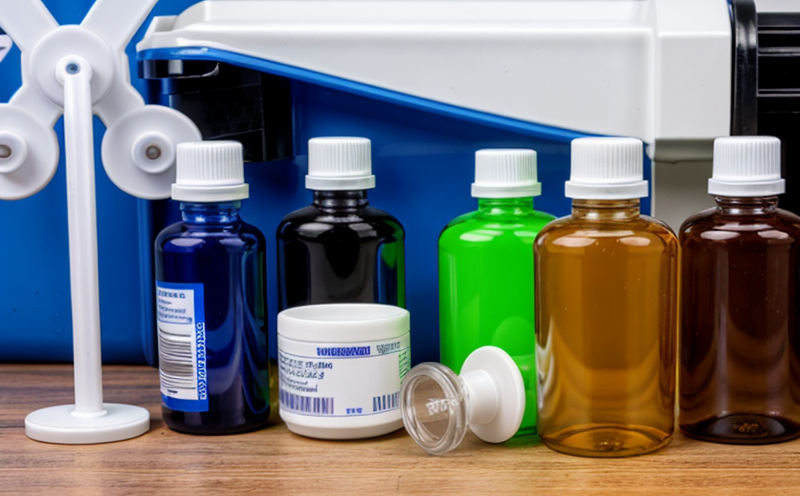ISO 5667-20 Hazardous Medical Wastewater Sampling
The ISO 5667-20 standard is a crucial guideline for hazardous medical wastewaters, ensuring the accurate and reliable sampling of these potentially harmful fluids. This service focuses on the specific requirements outlined in this international standard to ensure that waste management practices are compliant with global regulatory standards.
Hazardous medical wastewaters can contain various pathogens, chemicals, and other hazardous substances that pose a risk to human health and the environment if not managed properly. Accurate sampling is essential for determining the composition of these fluids and ensuring appropriate treatment before discharge into municipal sewer systems or natural water bodies.
The sampling process involves several critical steps, including:
- Identifying the specific types of medical waste being sampled (e.g., sharps containers, chemical waste).
- Ensuring that the sampling equipment is appropriate for the type and volume of wastewater being analyzed.
- Selecting representative samples to ensure they are reflective of overall wastewater characteristics.
- Storing the collected samples in a manner that preserves their integrity until analysis can be conducted.
The ISO 5667-20 standard provides detailed guidance on each of these steps, ensuring that the sampling process is both efficient and compliant with international standards. This service ensures that our clients are equipped with the knowledge and tools necessary to adhere to this stringent regulation.
Our team of experts uses advanced instrumentation and techniques to ensure accurate and reliable sampling results. We employ state-of-the-art equipment such as flow meters, pH sensors, and temperature probes to monitor key parameters during the sampling process. This ensures that our clients have access to comprehensive data that can be used for compliance reporting and risk management.
The service includes:
- On-site assessment of medical waste facilities
- Training on correct sampling procedures
- Data analysis using ISO 5667-20 compliant methods
- Comprehensive reporting including raw data, statistical summaries, and recommendations for improvement
By adhering to the rigorous standards set by ISO 5667-20, our clients can ensure that their medical waste management practices are not only compliant with international regulations but also contribute to safer, more sustainable operations.
Applied Standards
| Standard Code | Description |
|---|---|
| ISO 5667-20 | Sampling of hazardous and potentially infectious waste, including medical and pharmaceutical wastes |
| ASTM D4129 | Standard practice for sampling solid or semisolid radioactive waste materials |
| EN 13480 | Environmental protection - Waste from the pharmaceutical industry, including packaging and waste residues |
The ISO 5667-20 standard is central to this service, providing a framework for accurate sampling of hazardous medical wastewaters. This international standard ensures that all samples are collected in a manner that preserves their integrity and provides accurate data for analysis.
Additional standards such as ASTM D4129 and EN 13480 may also be referenced depending on the specific waste streams being analyzed, offering comprehensive coverage across various types of hazardous medical waste.
Scope and Methodology
The scope of this service encompasses the entire process of sampling hazardous medical wastewaters in compliance with ISO 5667-20. Our methodology ensures that every step, from initial identification to final analysis, adheres strictly to international standards.
We begin by conducting an on-site assessment of the medical waste facilities, identifying the types and volumes of waste present. This allows us to tailor our sampling approach to meet specific client needs. Once the waste streams have been identified, we select representative samples using appropriate equipment such as flow meters and pH sensors.
The collected samples are then stored in a manner that preserves their integrity until analysis can be conducted. Our team of experts uses advanced instrumentation to monitor key parameters during this process, ensuring accurate data collection. Once the sampling is complete, the data is analyzed using ISO 5667-20 compliant methods.
The final step involves preparing comprehensive reports that include raw data, statistical summaries, and recommendations for improvement. These reports are designed to provide clients with a clear understanding of their current practices and areas where improvements can be made.
Use Cases and Application Examples
- Hospitals seeking compliance with international regulations for hazardous medical wastewaters.
- Pharmaceutical companies looking to ensure the safety of waste streams before discharge into municipal systems.
- Medical facilities aiming to reduce risks associated with improper waste management practices.
- Laboratories conducting research on new methods for treating and analyzing hazardous medical wastes.
- Government agencies responsible for enforcing regulations related to medical waste disposal.
In each of these scenarios, the ISO 5667-20 standard plays a vital role in ensuring that sampling practices are both accurate and compliant. By adhering to this international standard, clients can be confident that their operations meet the highest standards of safety and environmental responsibility.





